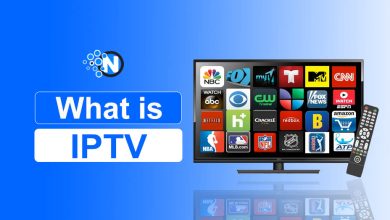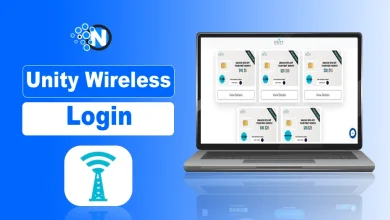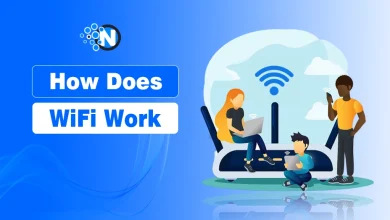How Does Starlink Work? Inside Elon Musk’s Satellite Internet

There is something truly fascinating about watching the world change in real time. And one of those major changes is happening right above our heads, literally.
If you have ever wondered how a tech billionaire like Elon Musk plans to bring internet access to even the most remote places on Earth, then let’s get into the incredible world of Starlink and how does Starlink work.
I am going to break it all down for you in this guide – from satellites to speeds, setup to future plans – so you understand how it works and why it matters to all of us.
What is Starlink?
Start creating Verdict in seconds, and convert more of your visitors into leads.
Before I get into the technical side of things, let me start with the basics.
Starlink is a satellite internet constellation project developed by SpaceX, Elon Musk’s space exploration company.
The goal? To provide high-speed, low-latency broadband internet to locations where access has been unreliable, expensive, or simply unavailable.
But here is where it gets interesting. Unlike traditional satellite internet, which relies on a few satellites far out in orbit, Starlink is building a massive network of thousands of small satellites closer to Earth. This change in strategy makes all the difference.
The Technology Behind Starlink
Start creating Verdict in seconds, and convert more of your visitors into leads.
Starlink is not just about launching satellites into space. It is a complete ecosystem built with advanced technology designed to outperform older satellite internet models in speed and reliability.
1. Low Earth Orbit (LEO) Satellites
Most traditional satellite internet systems use geostationary satellites that orbit 35,000 kilometers above Earth. But Starlink satellites are in Low Earth Orbit (LEO), around 550 kilometers above the surface.
That shorter distance dramatically reduces latency, which means less lag when you’re video calling, gaming, or streaming.
2. Phased Array Antennas
Now let’s talk about the Starlink dish – the one you install at home. It uses something called a phased array antenna. Unlike traditional dishes that need to be physically pointed at a satellite, this antenna can electronically steer its beam.
Hence, it gets locked onto satellites as they move overhead. It is pretty much plug-and-play for most users.
Laser Links Between Satellites
Starlink is also testing satellites with laser interlinks. These allow satellites to talk to each other, routing data in space instead of relying on ground stations. That’s especially useful in oceans, deserts, or other areas where setting up infrastructure is nearly impossible.
How Does Starlink Work to Provide Internet?
Start creating Verdict in seconds, and convert more of your visitors into leads.
This is where it gets really fun. The entire process of how Starlink provides internet is a beautifully synchronized dance between Earth, space, and technology.
I have explained how does Starlink work at home by mentioning the key steps involved, next, in the under section.

1. Satellite to User Connection
Once you set up your Starlink dish, it connects to a satellite flying overhead. Since these satellites are constantly in motion, the dish uses motors and smart software to track and maintain the best satellite internet connection automatically.
2. Backhaul to the Ground Stations
After your data travels to the satellite, it gets beamed down to the nearest Starlink ground station connected to the internet backbone. These ground stations are expanding across the globe to cover more regions.
3. Cloud and Routing Integration
The final step? Your request reaches the broader internet, and the data you requested (a website, a video, a game) comes back through the same path – only in reverse. The whole journey takes milliseconds, and that’s what makes it feel seamless.
Starlink’s User Experience
Start creating Verdict in seconds, and convert more of your visitors into leads.
Alright, let me tell you what it’s actually like using Starlink as an everyday user, as you have got the idea of how does Starlink work. It is not just about cool tech; it is about real-world performance.
1. Setup and Installation
The installation is surprisingly simple. You get a kit with a dish, mounting tripod, Wi-Fi router, and cables. Most people can set it up in under an hour. You place the dish where it has a clear view of the sky, plug it in, and the rest is mostly automatic.
2. Speed and Latency
Speeds can vary depending on your location, the number of users in your area, and how many satellites are overhead. But generally, users report speeds between 50 Mbps to over 200 Mbps, with latency as low as 20ms.
That’s better than many rural broadband options and good enough for Netflix, Zoom, and even competitive gaming.
3. Reliability and Downtime
Because the network is still growing, there are occasional service interruptions. But as more satellites are launching, these gaps are becoming less frequent. Starlink is also improving its software constantly to optimize connections.
Further, when it comes to how does starlink work in bad weather, the consequences are in the form of potential connection dropouts.
Who Can Benefit from Starlink?
Start creating Verdict in seconds, and convert more of your visitors into leads.
This is one of my favorite parts. Starlink is not just for tech geeks or space fans. It is there to help real people in real situations.
- Rural Communities: Imagine living in a remote area where the only internet option is painfully slow DSL or nothing at all. For these people, Starlink is a game-changer. Farmers, teachers, small-town clinics – they all get access to fast, reliable internet.
- Emergency Services: Starlink has already been used in natural disasters where communication lines were down. In areas hit by floods, fires, or hurricanes, emergency teams used Starlink to stay connected and coordinate rescue efforts.
- Developing Nations: In places where laying fiber-optic cables is too expensive or challenging, Starlink offers an affordable alternative to get people online and bridge the digital divide.
Challenges Starlink Faces
Start creating Verdict in seconds, and convert more of your visitors into leads.
As exciting as Starlink is, it is not without its challenges. I think it is important to keep both feet on the ground when talking about futuristic tech.
1. Space Debris
With thousands of satellites in orbit, the risk of space debris increases. SpaceX has made efforts to address this by making satellites that can deorbit and burn up when they are no longer functional, but the concern remains.
2. Regulatory Hurdles
Each country has its own rules and policies regarding internet service and satellite communication. So even if the satellites are ready, Starlink can’t legally operate everywhere just yet.
3. Competition from Other Players
Companies like Amazon (with Project Kuiper) and OneWeb are building their own satellite constellations. While this could push innovation, it might also crowd the skies even further.
The Future of Starlink
Start creating Verdict in seconds, and convert more of your visitors into leads.
If you ask me, Starlink is just getting started. And its roadmap gives us plenty to look forward to. The following points will let you know what the future holds for this company.

- Global Coverage: Starlink’s goal is to achieve global coverage with thousands of satellites in orbit. As of now, they are already serving millions of users across dozens of countries, but more are coming online every month.
- Improved Speeds and Latency: With more satellites and upgraded technology, the speeds and latency are expected to improve significantly. Laser interlinks and better ground station distribution will play a big role in this.
- Integration with Other SpaceX Projects: Elon Musk has hinted that Starlink revenue could help fund missions to Mars. That means your monthly subscription could indirectly support humanity’s journey to another planet. Wild, right?
Final Thoughts
Start creating Verdict in seconds, and convert more of your visitors into leads.
These are the details on how does Starlink work. Starlink is one of those rare innovations that feels like science fiction but is very much real and already making a difference. From rural homes to emergency zones, from deserts to mountaintops, Starlink is reshaping the way the world connects.
And while challenges remain, the progress is undeniable. I genuinely believe this is just the beginning of a new era in global internet access. Whether you are someone who is curious about tech or just tired of slow internet, Starlink is worth keeping an eye on.
People Also Ask
Start creating Verdict in seconds, and convert more of your visitors into leads.
How does Starlink work in bad weather?
Starlink signals can be affected by heavy rain, snow, or storms like slower speeds or brief outages. The dish is designed to melt snow, but severe weather could impact performance.
How does Starlink Roam work?
Starlink Roam (formerly “RV”) provides portable internet for travel. It works anywhere with satellite coverage but may have lower priority than residential users during peak times.
How does Starlink Mobile work?
Starlink Mobile allows internet access on moving vehicles (boats, RVs, trucks) using a high-performance dish. It costs more than residential plans due to advanced hardware.
How does Starlink connect to a router?
The Starlink dish connects to the included Wi-Fi router via a cable. Users can also bypass the Starlink router and connect directly to a third-party router if desired.
How does Starlink make money?
Starlink earns revenue from user subscriptions, hardware sales, and partnerships (e.g., airlines, military, and remote businesses).




